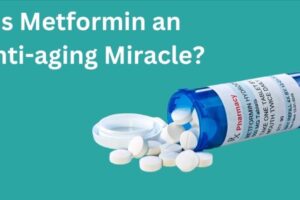LDN is a safe, non-toxic and inexpensive drug that helps regulate a dysfunctional immune system.
| What is Low-Dose Naltrexone? Low-dose Naltrexone (LDN) is a medication that has become increasingly popular in recent years for its many potential uses and health benefits. It’s typically used to treat opioid and alcohol addiction, but it can also be used off-label for conditions such as autoimmune diseases, chronic pain, anxiety, and more! In 1984 Naltrexone was approved by the FDA in the USA for the treatment of opioid addiction, used at the standard dose of 50 mg to 100 mg per day. It’s a pure opioid receptor antagonist. LDN is a pure inhibitor, so there is no narcotic effect. The chemical structure is almost identical to the endorphins that we make naturally called met-enkephalin, also known as opioid growth factor (OGF). LDN is an antagonist of the OGF receptors, and there are OGF receptors on a wide range of cells in the body. When we talk about LDN, we’re referring to doses that are a 10th or less of the standard dose of naltrexone. Most of the research studies have used 4.5 mg per day. Doses range from 0.001 mg – 16 mg in clinical practice. LDN binds to the endorphin receptors for about 1 – 1/2 hours, and the blockade lasts about 4 – 6 hours. Its effects are analgesic and anti-inflammatory. One of the other effects is that it increases the production of your endorphins.Endorphins are natural peptides produced in many cells that regulate cell growth, including your immune cells. Many patients who have autoimmune disease tend to have low levels of endorphins, met-enkephalin, (aka OGF), an important immunomodulatory. Opioid receptors are in the central and the peripheral nervous system, the GI tract, and on lymphocytes. By using LDN, you receive a brief blockade, creating a rebound effect giving you more endorphins, including OGF, and increased production of the OGF receptors. Conditions Low-dose Naltrexone Can Benefit LDN works by binding to the endorphin receptors in your brain. This makes your body produce more endorphins, which can control the body’s immune system and slow the production of unwanted cells that cause various medical conditions. LDN also works to reduce the pro-inflammatory chemicals in your brain known as cytokines. The result is lower inflammation and less pain. What is so fascinating about LDN is its ability to treat and alleviate systems of a wide variety of medical conditions, some of which include: anxiety, rheumatoid arthritis, fibromyalgia, ulcerative colitis, Crohn’s disease, chronic pain, autoimmune thyroid disorders, long COVID, and inflammatory conditions. Using low dose naltrexone for these conditions is “off-label” (which means it hasn’t been approved by the FDA but it is still a recognized use). How Long Does it Take Low Dose Naltrexone to Work? It may take up to 8 to 10 weeks for low dose naltrexone to work. It is important to keep taking it until at least then to know if it works for you. What Are the Side Effects of Low-dose Naltrexone? Side effects with LDN are uncommon because the dose is so low and has been reported by less than 8% of people. LDN is unlikely to cause the same side effects as high-dose naltrexone. Side effects of LDN may include: difficulty sleeping (insomnia), nausea, nightmares or wild dreams. Difficulty sleeping initially was reported by approximately 8% of people receiving low-dose naltrexone, but this resolved within two weeks in most people. Other side effects (such as nausea and wild dreams) were reported by less than 1% of people. LDN is usually well tolerated with few side effects. Some people need a more gradual increase in their dosage to help them tolerate the drug. LDN should be started at an extremely low dose, such as 1 to 1.5 mg/day, and the dosage should be increased by 1 mg every week to a maximum of 4.5 mg/day. Interactions You should avoid alcohol and certain other drugs when taking LDN. Because LDN blocks opioid receptors, it’s important not to take this medication with opioid pain relievers. Doing so may cause opioid withdrawal symptoms. Cytochrome P450 (CYP450) is a protein that helps your body metabolize drugs. Because naltrexone can inhibit these enzymes, it should not be taken with CYP450 substrate medications such as: Norvasc (amlodipine), BuSpar (buspirone, Valium (diazepam), Erythrocin (erythromycin), Viagra (sildenafil), Coumadin (R-warfarin), Mellaril (thioridazine) and certain chemotherapy drugs. Always discuss your current medication and any interaction potential with your clinician. Could you benefit from LDN? Talk to our clinicians to discuss if LDN is right for you! |







